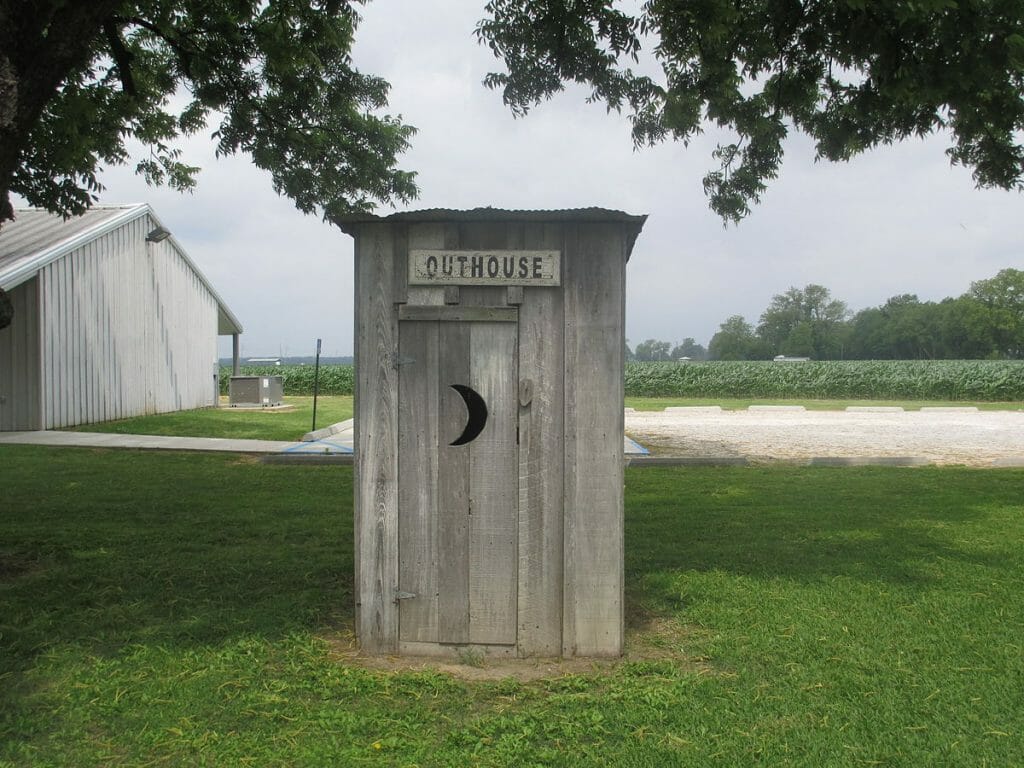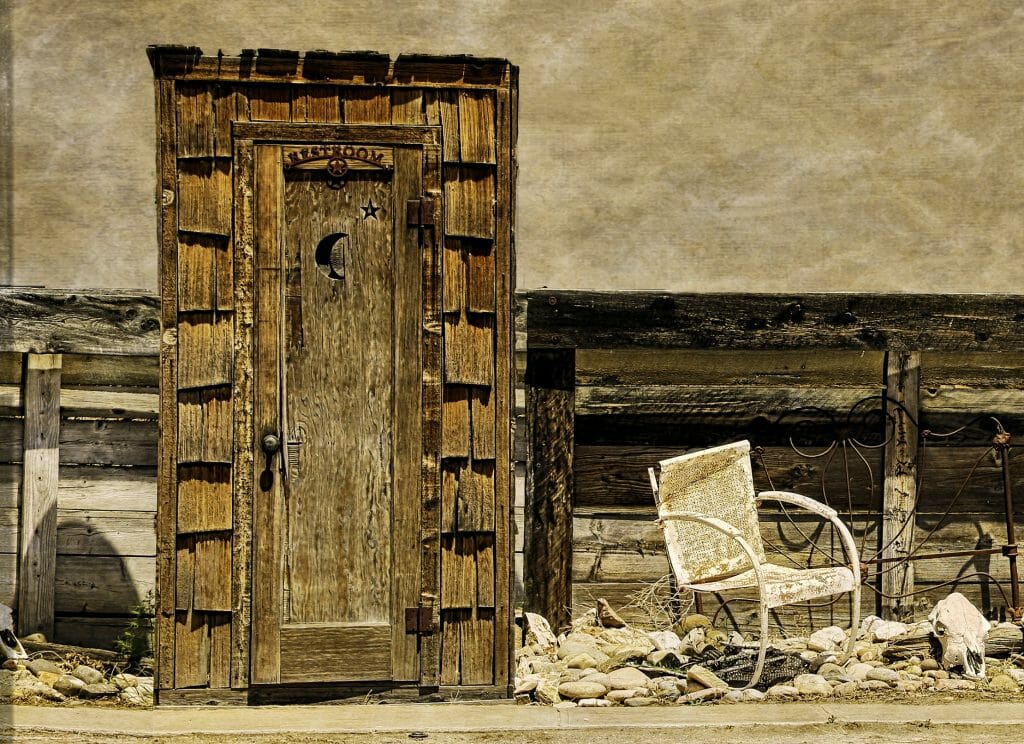Outhouses are not that common nowadays. Back in the day these humble buildings used to stand in every homestead. Many of them had some sort of a cutout in the door – some of them were shaped like a moon, some – like a heart or a simple rhombus. Why did the doors of outhouses have cutouts like that?
These cutouts actually served a practical function – they were needed for ventilation and lighting. If you’ve ever used an old-fashioned outhouse, you know how important the ventilation is. In fact, even if there is no cutout in the door, some ventilation holes are still present somewhere else. The advantage of the cutout is that some light gets in as well, making the loo a bit more comfortable to use. Meanwhile at night the light from a candle or a flashlight would shine through the cutout, indicating that the outhouse is currently being used. It is really not that surprising – country people were always very practical – barns weren’t painted red just for looks either.
However, most outhouses didn’t actually have cutouts in the door – this rural architectural tradition became more common only in the 20th century. Those that do have a cutout typically display one of three most common shapes – a rhombus, a crescent moon or a heart.

Rhombus-shaped cutout was more popular in Central and Eastern Europe. The reason for this shape is actually very simple – it is very easy to make since it has no curves and it combines male and female bathroom signs. It is basically two triangles put together, indicating that a particular outhouse is unisex.
The story of the origins of the crescent moon symbol on the doors of the outhouse is not as clear. Many people believe that the shape of the young moon indicated women’s outhouse. Eventually men started using the same outhouse, because women kept it cleaner, and men’s outhouse sign disappeared in history. Another version of this story is that men didn’t have a dedicated outhouse at all and simply went into the bushes. This is actually not true, because one outhouse was always meant to serve the entire family.

In actual reality, the crescent moon cutout became a popular decoration for outhouses only in the middle of the 20th century. And the most likely reason is old comics and Hollywood movies. Creators of these black and white pieces had to come up with a way to mark the outhouse to differentiate it from other gray buildings. A little crescent moon was probably used before, but cinema definitely made it more popular. So much so that people believe this to be an old tradition, while actually it dates just back to the 20th century. Movies and cartoons made this little symbol a recognizable sign of an outhouse, but your grandparents didn’t know it as such.

Why the moon? Well, are you familiar with the term “mooning”? Some believe that there might be a correlation between mooning, as the act of showing one’s butt for a comedic effect, and the crescent moon on the doors of the outhouse. You connect the dots.

Heart-shaped cutouts, very common in Europe, especially in Scandinavia, have equally blurry origins. Some believe that a little heart was just more inviting and made this rather smelly, but necessary building a bit more cosy and inviting. Again, once this symbol appeared in some movies it became more popular. Not surprisingly, some people believe that there is a connection with a butt as well, heart shape being an upside down bottom. Nowadays in some cases a heart indicates that the outhouse is meant for women, while men’s outhouse is marked with a symbol of spades.




